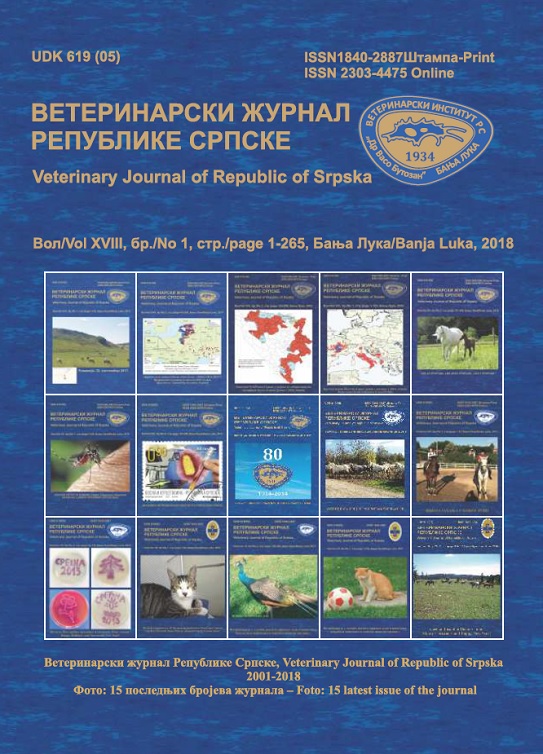METHODS FOR THE ANTIBIOTIC RESISTANCE DETECTION IN MICROORGANSIMS ISOLATED FROM FOOD
DOI:
https://doi.org/10.7251/VETJEN1801208LAbstract
Resistance to antibiotics is a growing problem that the World Health
Organization has declared one of the biggest threats to global health. The food
chain is one of the most important ways of transmitting and spreading resistance
to antibiotics between the population of resistant and populated by sensitive
commensal and / or pathogenic microorganisms. Resistance to antibiotics can be
inborn, or acquired by mutation or lateral gene transfer. From the aspect of the
spread of resistance, only resistance acquired by the lateral transfer of the gene
is significant. There are numerous methods for detecting and determining the
nature of antibiotic resistance in bacteria isolated from food. The methods must
be standardized and ensure the consistency of the obtained results. Methods for
determining the minimum inhibitory concentration of antibiotics are used to detect
phenotypic resistance in bacteria isolated from food. They include a microdilution
method, an agar dilution method, and an E-test. Qualitative and semi-quantitative
methods commonly used in clinical isolates are not suitable for antibiotic resistance
testing in food-isolated microorganisms. In the case of microorganisms with
detected presence of phenotypic resistance to antibiotics, the presence of the
resistance gene is determined. Microorganisms evidenced by the presence of genetic
determinants associated with acquired resistance to antibiotics represent a risk of
resistance dissemination among the susceptible populations. Commercially used
microorganisms should not possess genetic determinants of transferable antibiotic
resistance.

